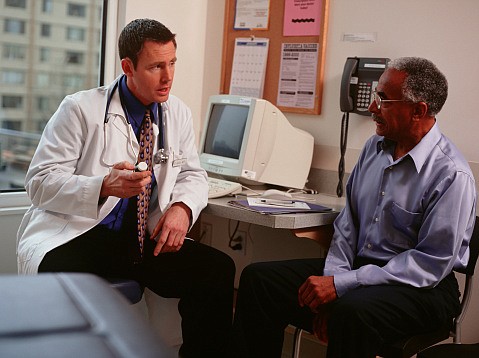How to give yourself a testicular self-exam
August 13, 2012 at 9:10 a.m.
You don't have to have gone to med school to give yourself a testicular self- exam. Although it's never smart to self diagnose your chances for developing testicular cancer, there are certain things only you can do to monitor the health of your reproductive organs. Here's a quick primer on giving yourself a testicular self- exam and what warning signs to look for.
- Always test yourself while standing, either during or immediately after a shower. The reason for this is because showering will ensure that the skin of your scrotum will be soft and relaxed, thereby making your self-examination easier.
- Use both hands to perform the test; examine one testicle at a time by holding it with one hand and feeling around the entire surface with the fingers of your other hand. Be gentle with yourself, but also be sure that your search is thorough and complete.
- Once you're done, repeat Step 2 for your other testicle.
What to Look For?
Naturally, if you're going to be giving yourself a testicular self- exam you're going to need to know what to look for to indicate any irregularity. If your testicle is normal, its surface should feel smooth and firm under your fingers. If your testicles feel excessively hard, pay a visit to your doctor for a closer look. Look for any irregularities in size, but always bear in mind that it's natural for one testicle to be slightly bigger than the other. You should also be feeling for any lumps or bumps. Typically, an irregular lump on your testicles will be hard and small, about the size of a pea. Lumps and size aren't all you're looking for when performing a self-examination of your testicles. Here are a few other signs that you should pay a visit to your doctor as soon as possible.
- Painful testicles. As long as you're not being too rough with yourself when giving yourself the exam, you should feel no pain. This could be indication that you have an infection that should be seen to immediately.
- Presence of thin, tube like veins above your testes.
- Inability to access both testicles. This is clear indication that your testicles haven't fully descended. Although it's not likely you'll notice this for the first time while performing a self-exam, be sure to consult a doctor if you do. An undescended testicle places you at higher risk of developing testicular cancer.
Related: Understanding the risks and symptoms of testicular cancer
Who Should Perform a Testicular Self- Exam?
The older you get, the more important it is to perform a testicular self- exam on a monthly basis. It's even more important to perform a self-exam if you have a family history of testicular cancer or if you've previously had testicular tumors.
You don't have to give yourself a testicular self- exam every time you take a shower, but doing so once per month is strongly recommended. This way, if you notice any irregularities you can contact your doctor right away and get a jump on treating testicular cancer before it spreads. Performing a self-exam once a month also familiarizes you with the feel of your body so that you'll notice minor changes. This is critical to nipping testicular cancer in the bud and ensuring you live a long and fruitful life.
Content Provided by Spot55.com





